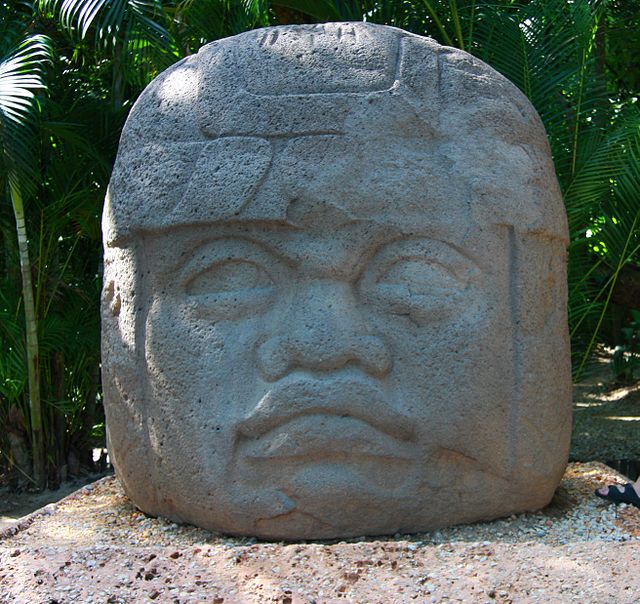Matthew Williams Stirling was an American ethnologist, archaeologist and later an administrator at several scientific institutions in the field. He is best known for his discoveries relating to the Olmec civilization.
Much of his work was done with his "wife and constant collaborator" of 42 years Marion Stirling.
Matthew Stirling posing with the primary figure from Altar 5, La Venta. This is a still from the Smithsonian Institution's Exploring Hidden Mexico (1943).
Marion and Matthew Stirling in Veracruz, Mexico, April 15, 1939
Olmec Head excavated in La Venta
The back of Stela C at Tres Zapotes The bars and circles show the Maya-style long-count date of 7.16.6.16.18. The glyphs surrounding the date are what is thought to be one of the few surviving examples of Epi-Olmec script.
The Olmecs were the earliest known major Mesoamerican civilization. Following a progressive development in Soconusco, they occupied the tropical lowlands of the modern-day Mexican states of Veracruz and Tabasco. It has been speculated that the Olmecs derived in part from the neighboring Mokaya or Mixe–Zoque cultures.
Olmec Head No. 3 from San Lorenzo-Tenochtitlán; 1200–900 BCE; basalt; height: 1.8 m, length: 1.28 m, width: 0.83 m; Xalapa Museum of Anthropology (Xalapa, Mexico)
El Señor de las Limas; 1000–600 BCE; greenstone; height: 55 cm; Xalapa Museum of Anthropology
The Wrestler; 1200–400 BCE; basalt; height: 66 cm, from the Arroyo Sonso area (Veracruz, Mexico); Museo Nacional de Antropología. Olmec artists are known for both monumental and miniature portrayals of what are assumed to be persons of authority-from six-ton heads sculptures to figurines.
Great pyramid in La Venta, Tabasco








